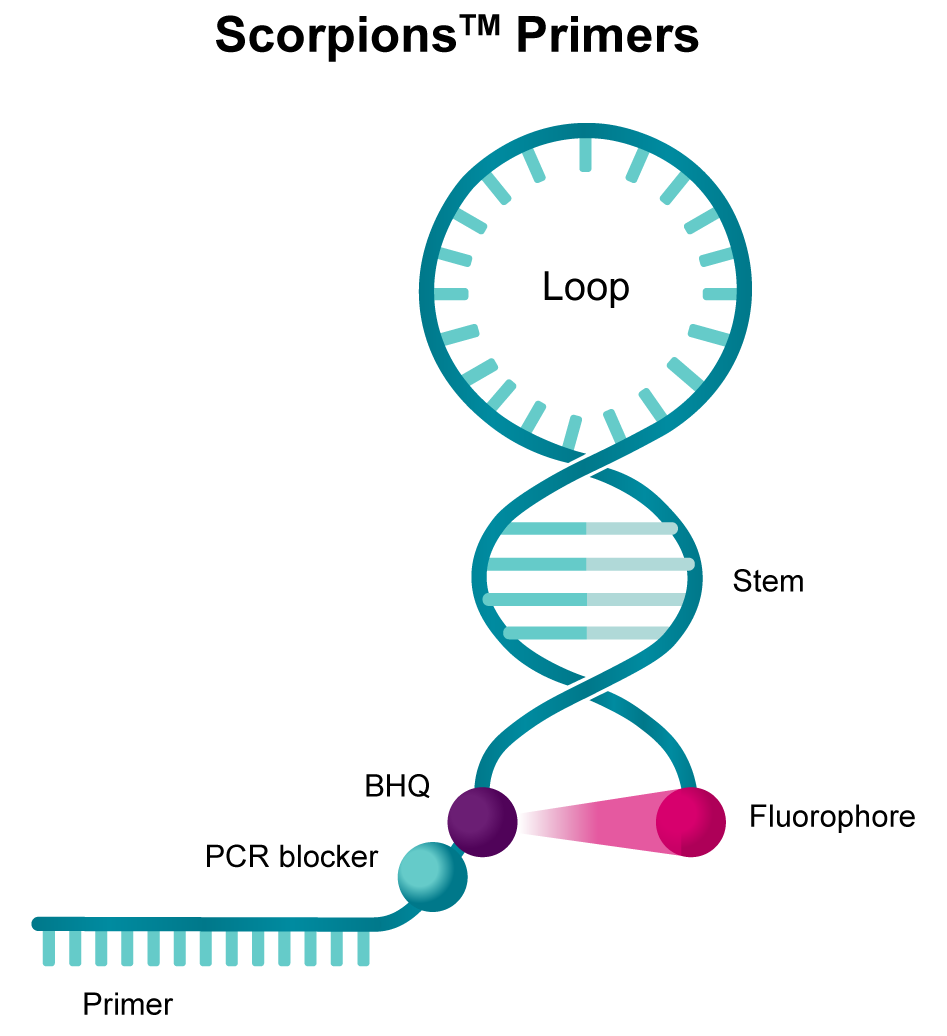Scorpions™ Primers integrate primer and probe into a single bifunctional molecule. Unlike dual-labeled probes and Molecular Beacons, Scorpions Primers combine primer and probe in one molecule, with the primer at the 3' end and the probe contained within a hairpin-loop structure at the 5' end.
Scorpions Primers utilize a uni-molecular mechanism that acts faster in solution for instantaneous fluorescence in real-time PCR. Like Molecular Beacons, these primers do not require enzymatic cleavage of the probe during PCR cycling, enabling the option for a post-PCR melt curve analysis. These qualities make Scorpions Primers valuable tools for rapid, real-time PCR, endpoint PCR, SNP detection, and gene quantification.
 |
| Image Credit: LGC Biosearch Technologies |
Key advantages of Scorpions Primers
Scorpions Primers provide a number of important advantages over other PCR Probe formats:
- Enhanced specificity: The stem-loop conformation confers high specificity, making Scorpions primers ideal for SNP/mismatch discrimation
- High signal-to-noise: Scorpions primers offer superior fluorophore quenching due to the proximity and the direct energy transfer between reporter and quencher while in the closed hairpin conformation
- Melt curve analysis suitability: Because Scorpions primers generate fluorescence under non-hydrolytic conditions by target hybridisation, post-PCR melt curve analysis can be performed
- Rapid hybridisation: The proximity of the probe region and the target sequence kinetically favours formation of the probe-template hybrid over template duplex re-annealing. The unimolecular event enables rapid signal generation during hybridisation.
Related info
Storage and handling of primers, custom oligos and BHQ Probes
Probe selection guide
Oligo toolbox